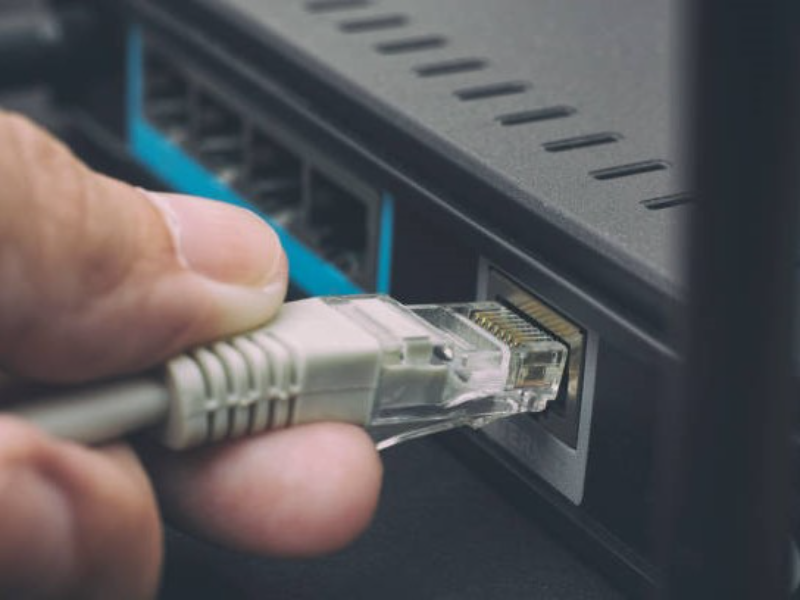- Ethernet is a network protocol that defines how data is transmitted over local area networks (LANs), ensuring reliable and efficient communication.
- The evolution of Ethernet has significantly influenced modern networking, offering high-speed connectivity and scalability across various applications.
Ethernet is often mentioned in discussions about network infrastructure, but its exact role can sometimes be misunderstood. Is Ethernet a network protocol? In this blog, we delve into the nature of Ethernet, its functionality within network communication, and its substantial impact on modern networking. By understanding Ethernet’s protocols and standards, we can better appreciate its contributions to reliable and high-speed data transmission.
Ethernet as a network protocol
1. Defining ethernet: Local area network communication
Ethernet is indeed a network protocol that establishes rules for data transmission within local area networks (LANs). It encompasses a set of standards and technologies outlined by the IEEE 802.3 specification, which dictates how devices in a network should format, transmit, and process data packets. Ethernet’s protocols ensure that data is delivered reliably and efficiently, making it a cornerstone of modern networking.
At its core, Ethernet utilises a method known as Carrier Sense Multiple Access with Collision Detection (CSMA/CD). This protocol allows multiple devices to share the same network medium while minimising collisions and ensuring orderly data transmission. When a device wants to send data, it first listens to the network to check if the medium is free. If a collision occurs, the devices involved wait for a random period before attempting to retransmit, ensuring efficient communication.
2. Evolution and advancements: Enhancing speed and scalability
Since its inception in the 1970s, Ethernet has undergone significant advancements to meet the growing demands of network communication. Early Ethernet standards offered data transfer rates of 10 Mbps, which have since evolved to support speeds of 100 Mbps (Fast Ethernet), 1 Gbps (Gigabit Ethernet), and even 100 Gbps and beyond (Gigabit Ethernet and Terabit Ethernet). These improvements have enabled Ethernet to support a wide range of applications, from simple home networks to complex enterprise infrastructures.
One of the key developments in Ethernet technology is the introduction of Ethernet over twisted pair cables (such as Cat5e, Cat6, and Cat7). These cables offer flexibility and ease of installation, making Ethernet a preferred choice for both wired and wireless networks. Additionally, advancements in Power over Ethernet (PoE) technology allow Ethernet cables to deliver both data and power to devices like IP cameras and wireless access points, simplifying network deployments.
Also read: Exploring the advantages of network bridges in modern networking
Also read: Unlocking the potential of raw sockets in networking
The critical role of ethernet
1. Network reliability and performance: The benefits of ethernet
Ethernet’s protocols ensure reliable and high-performance network communication. By standardising data transmission methods, Ethernet minimises errors and data loss, providing a stable and consistent network experience. The widespread adoption of Ethernet has led to the development of robust networking equipment, including switches, routers, and network interface cards (NICs), all optimised for Ethernet connectivity.
The scalability of Ethernet is another significant advantage. As network demands grow, Ethernet can be easily upgraded to higher speeds and capacities without overhauling the entire network infrastructure. This scalability makes Ethernet a cost-effective solution for businesses and organisations looking to expand their network capabilities.
2. Future trends: Ethernet in the modern era
The future of Ethernet continues to be shaped by emerging technologies and evolving network requirements. With the rise of the internet of things (IoT), Ethernet is adapting to accommodate the influx of connected devices, offering enhanced security and management features. The development of Ethernet standards for automotive and industrial applications further expands its reach, enabling reliable communication in diverse environments.
Innovations such as Ethernet over Fibre and Ethernet over Wireless are also gaining traction, providing high-speed connectivity in scenarios where traditional cabling may be impractical. These advancements ensure that Ethernet remains a vital and versatile network protocol, capable of meeting the demands of modern digital communication.

